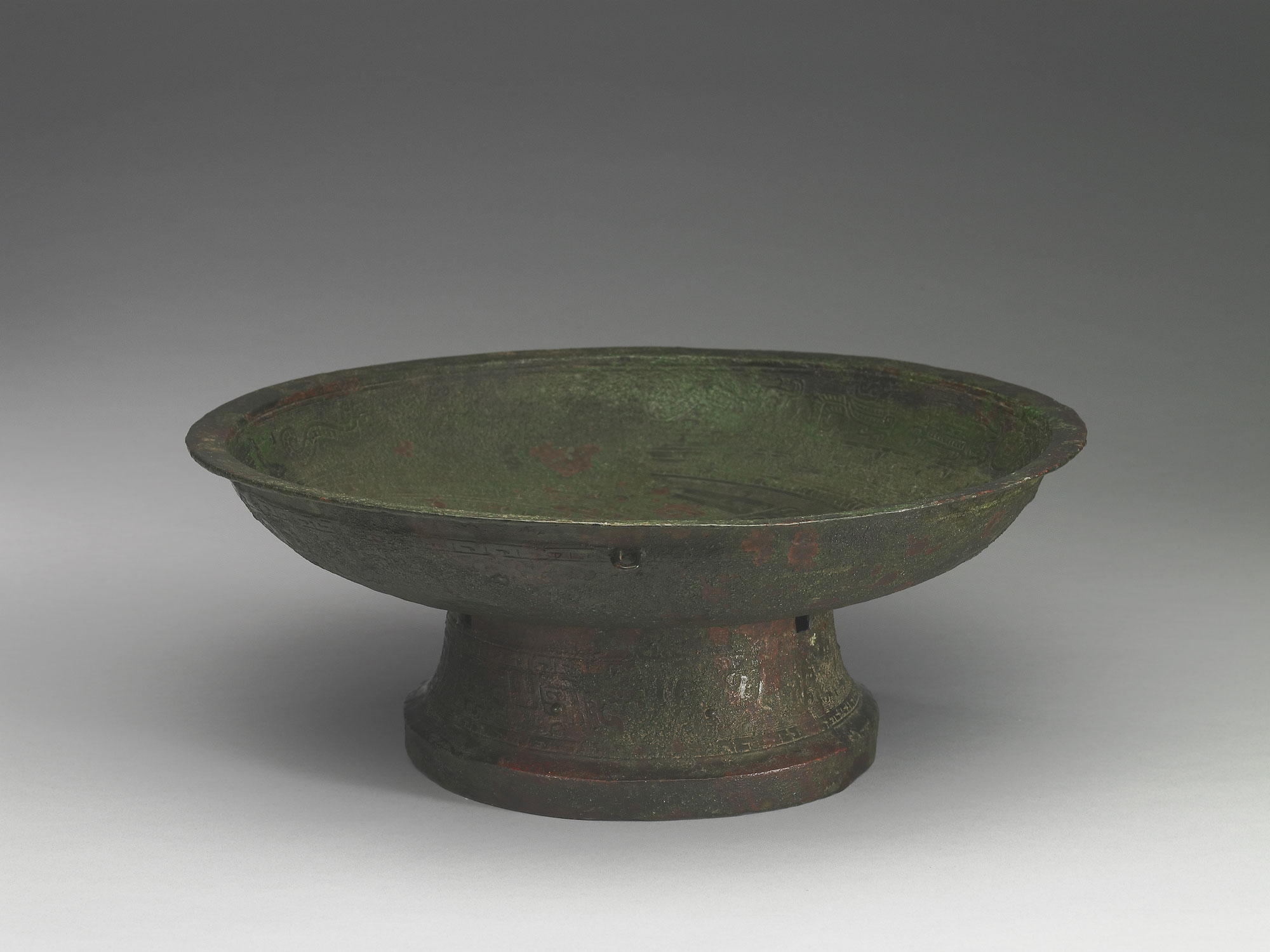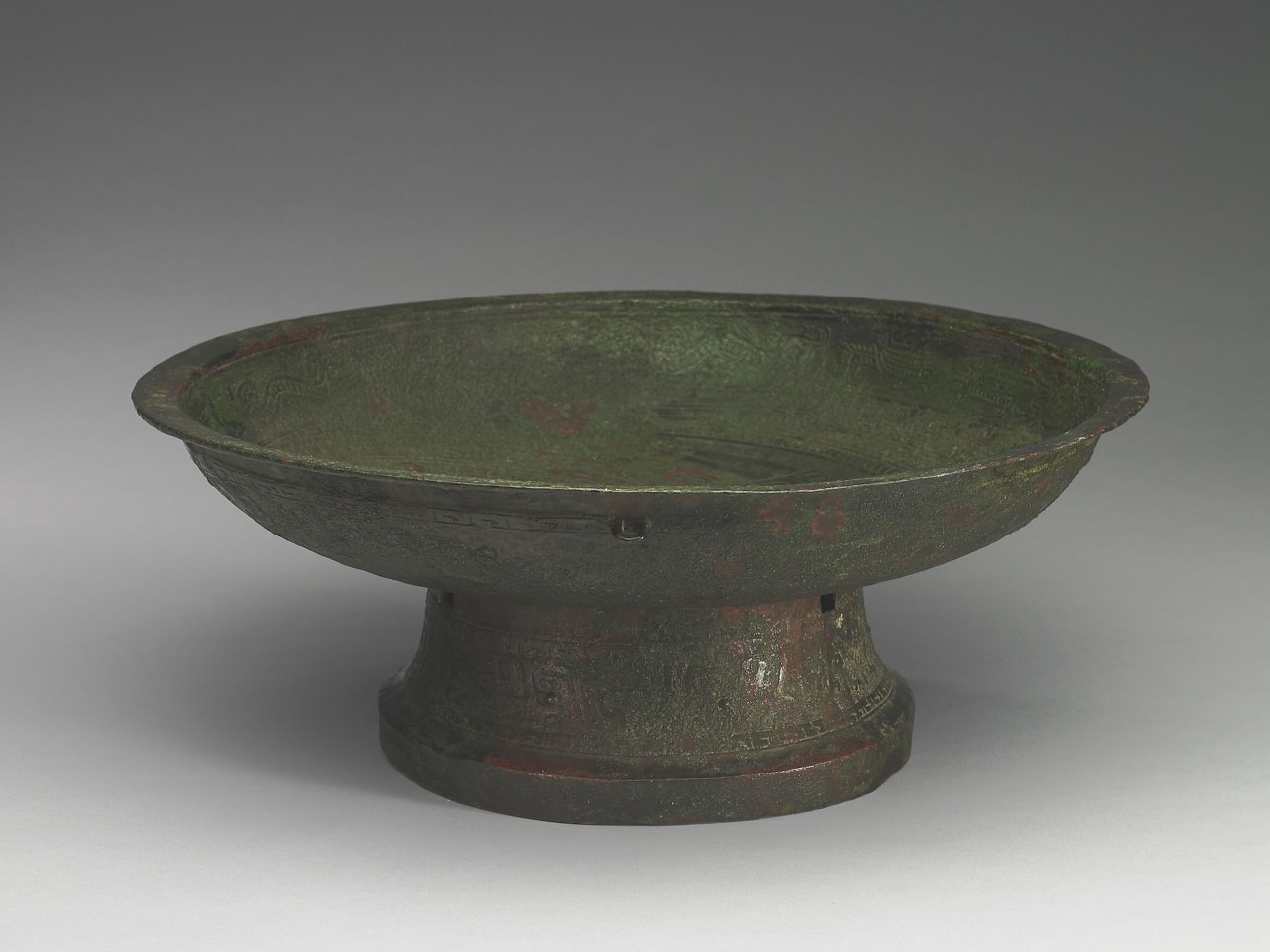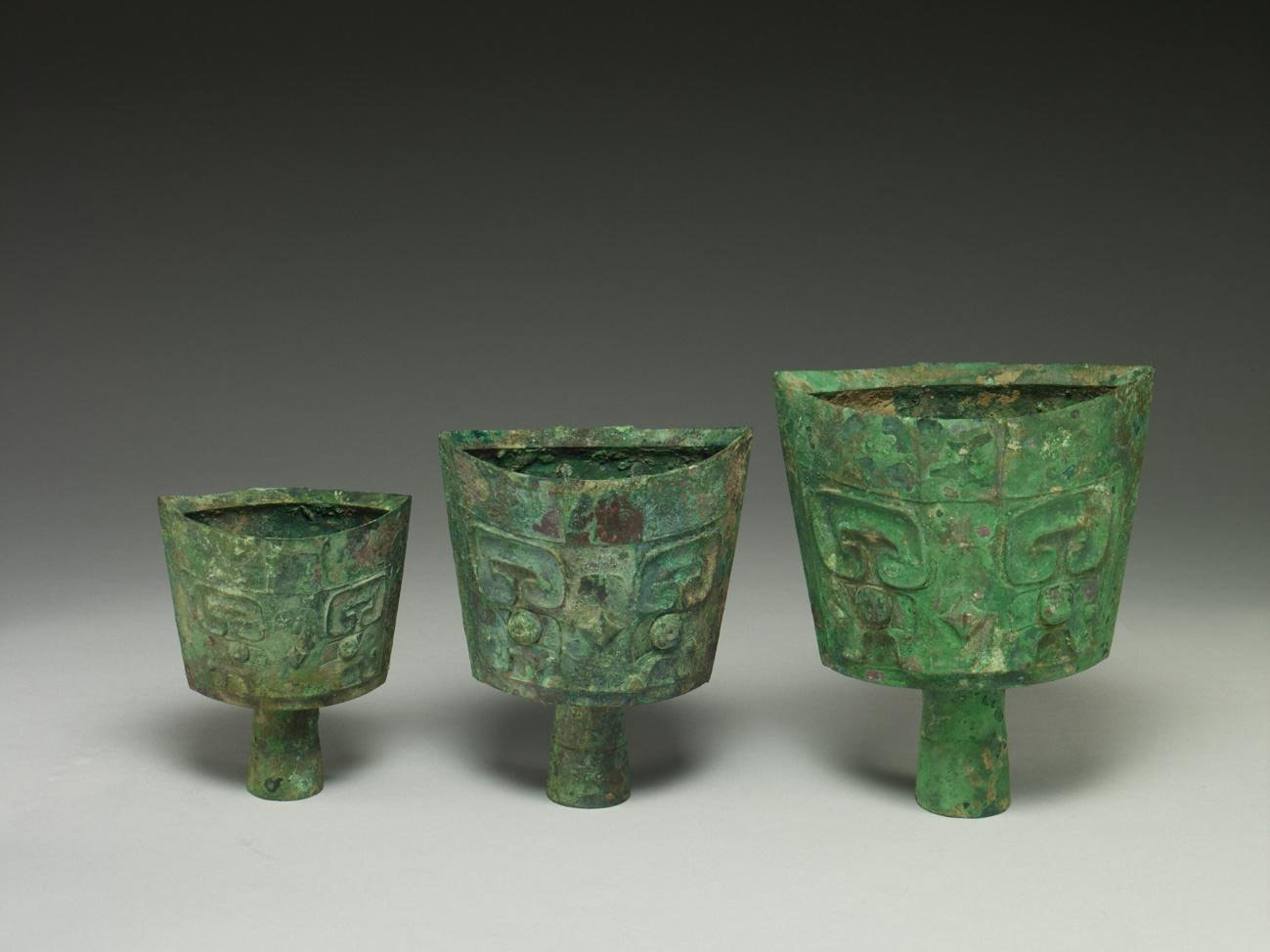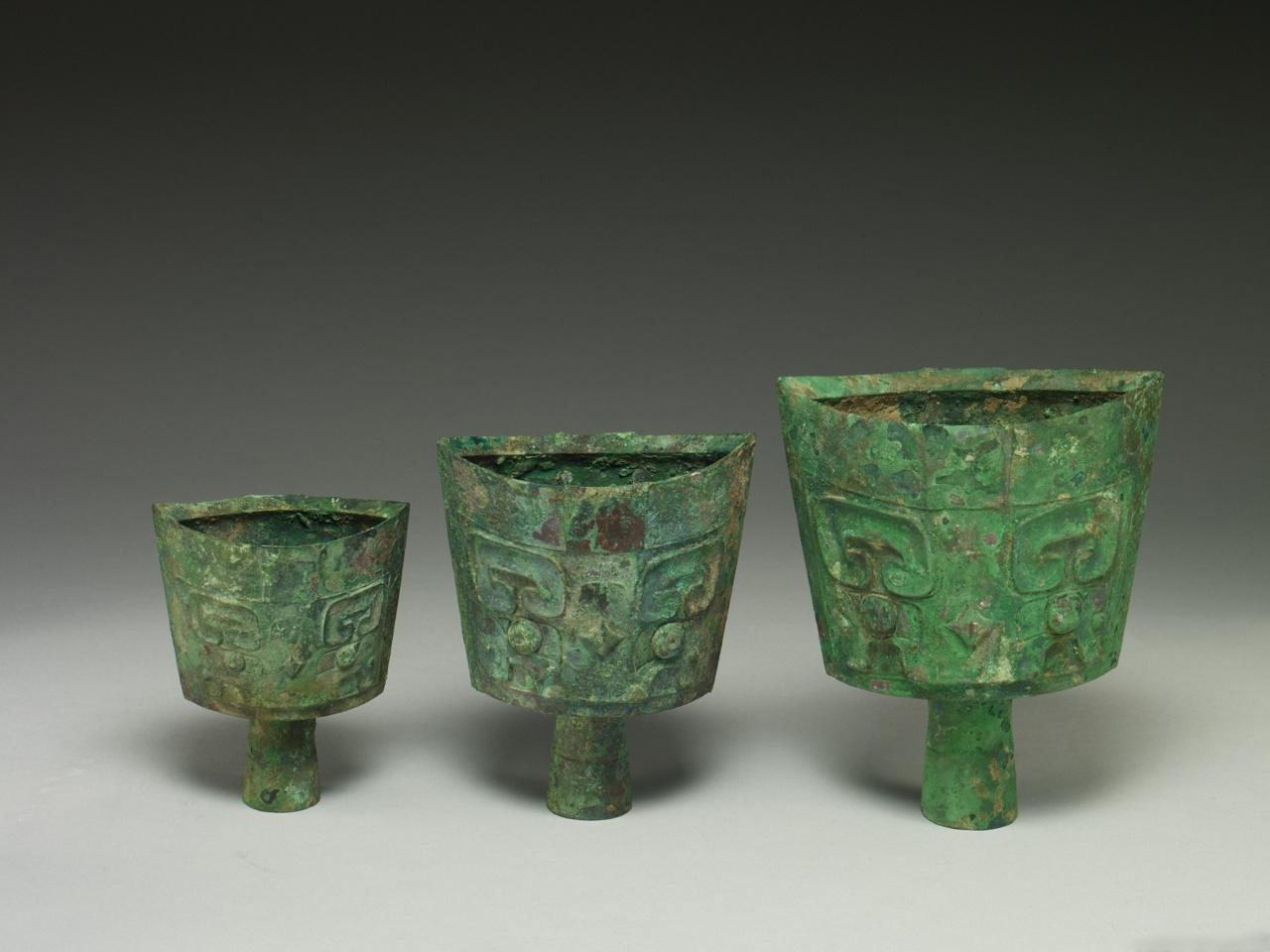Rites and Music: Ritual Objects From Shang Dynasty
The inaccessibility of materials and complexity in making heightened the status of ritual bronzes. They were displayed at the ceremonies and buried with the deceased, respecting life and death in the same quintessence of "Rites and Music".
By early Shang, bronze vessels had begun to appear in sets. The sophisticated combinations further matured in late Shang, such as commonly seen examples of ding, yan, and li, or gui and dou, in the food vessel category; gu, jue, zhi, and jia, or lei, pou, zun, and you, for drink vessels; yu and pan, as water vessels. The all-pervading presence testifies to the paramount significance of bronzes in that fully-developed stage of a rite-based system.
The most common patterns on bronze objects, shou-mian (animal masks), feng-niao (mythical phoenix), and kui dragons, initially conceived to mediate with deities and ancestors, over the time also evolved into a dazzling array of magnificent, intricate variations, the dragon-and-phoenix pattern being one of the examples.
The elaborate forms and motifs of the ancient bronzes delivered the very first pinnacle in the art of China.



